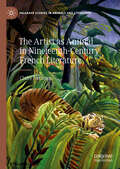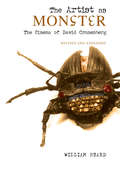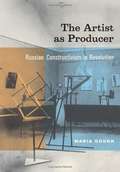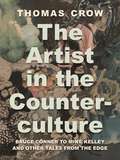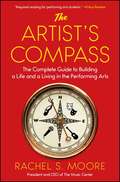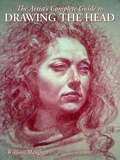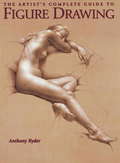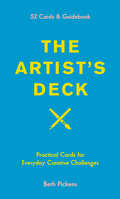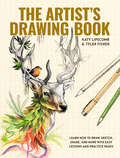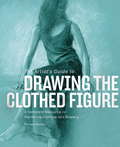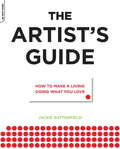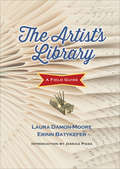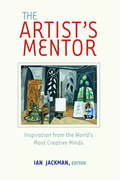- Table View
- List View
The Artist as Animal in Nineteenth-Century French Literature (Palgrave Studies in Animals and Literature)
by Claire NettletonThe Artist as Animal in Nineteenth-Century French Literature traces the evolution of the relationship between artists and animals in fiction from the Second Empire to the fin de siècle. This book examines examples of visual literature, inspired by the struggles of artists such as Edouard Manet and Vincent van Gogh. Edmond and Jules de Goncourt’s Manette Salomon (1867), Émile Zola’s Therèse Raquin (1867), Jules Laforgue’s “At the Berlin Aquarium” (1895) and “Impressionism” (1883), Octave Mirbeau’s In the Sky (1892-1893) and Rachilde’s L’Animale (1893) depict vanguard painters and performers as being like animals, whose unique vision revolted against stifling traditions. Juxtaposing these literary works with contemporary animal theory (McHugh, Deleuze, Guattari and Derrida), zoo studies (Berger, Rothfels and Lippit) and feminism (Donovan, Adams and Haraway), Claire Nettleton explores the extent to which the nineteenth-century dissolution of the human subject contributed to a radical, modern aesthetic. Utilizing these interdisciplinary methodologies, Nettleton argues that while inducing anxiety regarding traditional humanist structures, the “artist-animal,” an embodiment of artistic liberation within an urban setting, is, at the same time, a paradigmatic trope of modernity.
The Artist as Monster: The Cinema of David Cronenberg
by William BeardPAPERBACK INCLUDES TWO NEW CHAPTERSDavid Cronenberg is one of the most fascinating filmmakers in the world today. His provocative work has stimulated debate and received major retrospectives in museums, galleries, and cinematheques around the world. William Beard's The Artist as Monster was the first book-length scholarly work in English on Cronenberg's films, analyzing all of his features from Stereo (1969) to Crash (1996). In this paperback edition, Beard includes new chapters on eXistenZ (1999) and Spider (2002).Through close readings and visual analyses, Beard argues that the structure of Cronenberg's cinema is based on a dichotomy between, on the one hand, order, reason, repression, and control, and on the other, liberation, sexuality, disease, and the disintegration of self and of the boundaries that define society. The instigating figure in the films is a scientist character who, as Cronenberg evolves as a filmmaker, gradually metamorphoses into an artist, with the ground of liberation and catastrophe shifting from experimental subject to the self.Bringing a wealth of analytical observation and insight into Cronenberg's films, Beard's sweeping, comprehensive work has established the benchmark for the study of one of Canada's best-known filmmakers.
The Artist as Producer: Russian Constructivism in Revolution
by Maria GoughThe Artist as Producer reshapes our understanding of the fundamental contribution of the Russian avant-garde to the development of modernism. Focusing on the single most important hotbed of Constructivist activity in the early 1920s--the Institute of Artistic Culture (INKhUK) in Moscow--Maria Gough offers a powerful reinterpretation of the work of the first group of artists to call themselves Constructivists. Her lively narrative ranges from famous figures such as Aleksandr Rodchenko to others who are much less well known, such as Karl Ioganson, a key member of the state-funded INKhUK whose work paved the way for an eventual dematerialization of the integral art object. Through the mining of untapped archives and collections in Russia and Latvia and a close reading of key Constructivist works, Gough highlights fundamental differences among the Moscow group in their handling of the experimental new sculptural form--the spatial construction--and of their subsequent shift to industrial production. The Artist as Producer upends the standard view that the Moscow group's formalism and abstraction were incompatible with the sociopolitical imperatives of the new Communist state. It challenges the common equation of Constructivism with functionalism and utilitarianism by delineating a contrary tendency toward non-determinism and an alternate orientation to process rather than product. Finally, the book counters the popular perception that Constructivism failed in its ambition to enter production by presenting the first-ever case study of how a Constructivist could, and in fact did, operate within an industrial environment. The Artist as Producer offers provocative new perspectives on three critical issues--formalism, functionalism, and failure--that are of central importance to our understanding not only of the Soviet phenomenon but also of the European vanguards more generally.
The Artist in the Counterculture: Bruce Conner to Mike Kelley and Other Tales from the Edge
by Thomas CrowHow California’s counterculture of the 1960s to 1980s profoundly shaped—and was shaped by—West Coast artistsThe 1960s exert a special fascination in modern art. But most accounts miss the defining impact of the period’s youth culture, largely incubated in California, on artists who came of age in that decade. As their prime exemplar, Bruce Conner, reminisced, “I did everything that everybody did in 1967 in the Haight-Ashbury. . . . I would take peyote and walk out in the streets.” And he vividly channeled those experiences into his art, while making his mark on every facet of the psychedelic movement—from the mountains of Mexico with Timothy Leary to the rock ballrooms of San Francisco to the gilded excesses of the New Hollywood. In The Artist in the Counterculture, Thomas Crow tells the story of California art from the 1960s to the 1980s—some of the strongest being made anywhere at the time—and why it cannot be understood apart from the new possibilities of thinking and feeling unleashed by the rebels of the counterculture.Crow reevaluates Conner and other key figures—from Catholic activist Corita Kent to Black Panther Emory Douglas to ecological witness Bonnie Ora Sherk—as part of a generational cohort galvanized by resistance to war, racial oppression, and environmental degradation. Younger practitioners of performance and installation carried the mindset of rebellion into the 1970s and 1980s, as previously excluded artists of color moved to the forefront in Los Angeles. Mike Kelley, their contemporary, remained unwaveringly true to the late countercultural flowering he had witnessed at the dawn of his career.The result is a major new account of the counterculture’s enduring influence on modern art.
The Artist's Compass: The Complete Guide to Building a Life and a Living in the Performing Arts
by Rachel MooreAn inspiring, real world guide for artists in the classic bestselling tradition of What Color Is Your Parachute? that shows how to build a successful, stable career in the performing arts, from the President and CEO of the Los Angeles Music Center who has carved her own success through her creative talent and business skill.While performing artists have many educational opportunities to perfect their craft, they are often on their own when it comes to learning the business skills necessary to launch their careers. At the end of the day, show business is, well, a business. In The Artist's Compass, Los Angeles Music Center CEO Rachel Moore shares how to make life as a performer more successful, secure, and sustainable by approaching a career in the arts like an entrepreneur. A former dancer in the American Ballet Theatre's corps de ballet, Moore knows firsthand what it's like to struggle and succeed as an artist. Now in an offstage role as CEO, Moore shares the hard-won lessons she's learned about making one's own success and encourages every performer to develop creative talent alongside marketable skills. With testimonials from artists like Lang Lang, Sigourney Weaver, and Renee Fleming, plus inspiring anecdotes from Moore's own journey in the arts, The Artist's Compass teaches aspiring performers how to think like an entrepreneur to create their own brand and marketing platform to achieve personal and professional success. In an engaging, realistic, and authoritative voice, Moore combines her artistic and corporate experience to address the finer points of building a career in a challenging industry, teaching young performers how to achieve financial independence so that they might have creative independence.
The Artist's Complete Guide to Drawing the Head
by William MaughanIn this innovative guide, master art instructor William Maughan demonstrates how to create a realistic human likeness by using the classic and highly accurate modeling technique of chiaroscuro (Italian for "light and dark") developed by Leonardo da Vinci during the High Renaissance.Maughan first introduces readers to the basics of this centuries-old technique, showing how to analyze form, light, and shadow; use dark pencil, white pencil, and toned paper to create a full range of values; use the elements of design to enhance a likeness; and capture a sitter's gestures and proportions. He then demonstrates, step by step, how to draw each facial feature, develop visual awareness, and render the head in color with soft pastels.
The Artist's Complete Guide to Facial Expression
by Gary FaiginArtists love this book, the definitive guide to capturing facial expressions. In a carefully organized, easy-to-use format, author Gary Faigin shows readers the expressions created by individual facial muscles, then draws them together in a section devoted to the six basic human emotions: sadness, anger, joy, fear, disgust, and surprise. Each emotion is shown in steadily increasing intensity, and Faigin's detailed renderings are supplemented by clear explanatory text, additional sketches, and finished work. An appendix includes yawning, wincing, and other physical reactions. Want to create portraits that capture the real person? Want to draw convincing illustrations? Want to show the range of human emotion in your artwork? Get The Artist's Complete Guide to Facial Expression!From the Trade Paperback edition.
The Artist's Complete Guide to Figure Drawing
by Anthony RyderMany of us want to learn "how to draw." But as artist Anthony Ryder explains, it's much more important to learn what to draw. In other words, to observe and draw what we actually see, rather than what we think we see. When it comes to drawing the human figure, this means letting go of learned ideas and expectation of what the figure should look like. It means carefully observing the interplay of form and light, shape and line, that combine to create the actual appearance of human form. In The Artist's Complete Guide to Figure Drawing, amateur and experienced artists alike are guided toward this new way of seeing and drawing the figure with a three-step drawing method.The book's progressive course starts with the block-in, an exercise in seeing and establishing the figure's shape. It then build to the contour, a refined line drawing that represents the figure's silhouette. The last step is tonal work on the inside of the contour, when light and shadow are shaped to create the illusion of form. Separate chapters explore topics critical to the method: gesture, which expresses a sense of living energy to the figure; light, which largely determines how we see the model; and form, which conveys the figure's volume and mass. Examples, step-by-steps, and special "tips" offer helpful hints and practical guidance throughout.Lavishly illustrated with the author's stunning artwork, The Artist's Complete Guide to Figure Drawing combines solid instruction with thoughtful meditations on the art of drawing, to both instruct and inspire artists of all levels.
The Artist's Complete Health and Safety Guide: Konqueror, Kdevelop, Opera, Calligra Suite, Skype, Amarok, Kde Software Compilation 4, Vlc Media Player, Kontact, K3b, Scribus, Digikam, Ktorrent, Rekonq, Clementine, Doxygen, Kvirc, Musescore, Konversation, Umbrello, Kget, Kopete
by Monona RossolDozens of at-a-glance tables and charts present vital information about art materials, ingredients, technical hazards, proper protective equipment, and safe work practices simply and accurately. This brand-new third edition is now completely revised and expanded to detail lifesaving new safety and ventilation equipment, present urgent new discoveries on toxins and pollutants found in arts and crafts materials, and explain the controversies surrounding new government regulations. A virtual lifesaver for all art and craft workers.
The Artist's Deck: Practical Cards for Everyday Creative Challenges
by Beth PickensA healing tool that empowers creatives of all types to confront their shadows and embrace their art. Whether you are grappling with jealousy, rejection, imposter syndrome, or over-commitment, this 52-card deck can help you face your fears and transmute them into opportunities for expansion, creativity, and growth.Creative roadblocks are a fact of life for every artist, and every artist needs tools to help them clear the path. Enter The Artist's Deck, created by arts counselor and author Beth Pickens, to help you return to your art, no matter what obstacles you encounter.In this handy, interactive card deck, Pickens identifies common traps, feelings, myths, and blocks that artists encounter and offers insight into working through each one. Each card describes an obstacle and poses reflection questions and exercises to transform that obstacle into a source of inspiration and generative energy. Whether you seek guidance on a specific topic or use the deck as an oracle tool to inspire growth, The Artist's Deck will support you as you work through the creative challenges that come your way.CREATIVITY + SELF-CARE: Mindfulness Cards meet The Artist’s Way in this self-help tool crafted specifically for artists. Select a card and develop a practice of reflection and action to acknowledge your anxieties, consider new perspectives and approaches, and overcome creative hurdles with self-awareness and self-compassion.EXPERT AUTHOR: Beth Pickens holds a master’s degree in counseling psychology and has a long history of experience advising and supporting artists and arts organizations. She is perfectly positioned to offer advice on navigating the many challenges—structural and internal, practical and metaphysical—that artists face. A VERSATILE TOOL: The Artist's Deck is portable, adaptable, succinct, and flexible—it's a hands-on, tactile tool for disrupting the patterns that keep you from making your art. Keep it in your bag and reach for it whenever you need it, whether you're at home, in the studio, on a train, in an office, or going off the grid at an immersive retreat.Perfect for:Artists, illustrators, designers, and other visual creativesCrafters, creative hobbyists, and aspiring makers of all kindsPeople experiencing creative blocks or struggling with imposter syndromeOracle card and tarot deck enthusiastsGift shoppers seeking a meaningful gift for creative and artistic family and friendsArts consultants, creativity and life coaches, and their clientsFans of Beth Pickens and Make Your Art No Matter What
The Artist's Drawing Book: Learn How to Draw, Sketch, Shade, and More with Easy Lessons and Practice Pages
by Katy Lipscomb Tyler FisherSpark your creativity and hone your drawing skills with this comprehensive art book for beginners—which includes interactive lessons and fun practice pages!Join master artists Katy Lipscomb and Tyler Fisher as they guide you step-by-step through the art-making process. Using their Sketching Formula, anyone from beginners to experienced artists can improve their drawing abilities, expand their imagination, and achieve their creative potential. Filled with tips, tricks, and techniques, this interactive workbook guides you through a vast array of artistic approaches while inspiring your unique style.From comprehensive lessons that cover the basics of art theory to unique practice prompts that will get your creative juices flowing, The Artist's Drawing Book will teach you:• The fundamentals of art, like perspective, shading, composition, and color theory—all broken down into easy-to-digest lessons• Tips for avoiding common beginner mistakes, so you can confidently sketch any subject• Tricks for realistic texture, blending, and shading, no matter if you're working with professional-grade colored pencils or a cheap ballpoint pen• Techniques for mixing mediums so you can be limitless when creating your artwork• How to view the world like a true artist, so you can overcome creative block and find artistic inspiration wherever you go• ...and many more invaluable tips and tricks!If you're ready to start drawing as you learn how to develop your artistic abilities, The Artist's Drawing Book will encourage hands-on action to help you bring your artistic dreams to fruition.Also features:• Premium 140 gsm paper—perfect for testing out your new art skills• A sturdy hardcover with layflat design• Interactive activities so you can draw alongside each lesson• More than 200 pages of content• Over 700 inspiring illustrations• Valuable tips, tricks, and insights from the pros• Creative prompts, ideas, and inspiration• Suitable for all skill levels
The Artist's Everything Handbook: A New Guide to Drawing and Painting
by Kate WilsonThe Artist’s Everything Handbook is your complete guide to the fundamentals of artistic creation. Encompassing a diverse range of drawing, sketching, and painting techniques—from pen and ink to oils and acrylics—you’ll find everything you need to create daring and imaginative works of art.Divided according to medium, each section offers an informative overview and a thorough exploration of all the relevant tools and materials. Chapters suggest innovative ways to tackle your subjects, and provide specially commissioned illustrations with detailed tutorials and helpful tips. Learn how to properly mix paint colors, take a small object and scale it up, and play with the idea of positive and negative space. Inside, you’ll also find galleries of contemporary artwork that demonstrate the range of effects that can be achieved using a particular technique. Acknowledging the growing interest in digital media, this book also includes information on how certain effects can be re-created using programs such as Photoshop and drawing apps. And finally, artist profiles offer insight into the working processes of some of today’s emerging painters and drawers from all around the world.Filled with imaginative ideas and tutorials, varied and inspiring work from young contemporary artists, and a fresh, modern approach to old art forms, this book is your essential reference to dive into the boundless possibilities of drawing and painting.
The Artist's Guide to Drawing Animals: How to Draw Cats, Dogs, and Other Favorite Pets
by J. C. AmberlynCreate Classic Portraits of Favorite PetsThe Artist's Guide to Drawing Animals continues the rich tradition of animals in art. In this step-by-step guide to rendering your favorite animals in pencil and pen-and-ink, J. C. Amberlyn combines her love of pets and other familiar domestic creatures with her beautiful, detailed drawing style. Covering a variety of animals from beloved pets like dogs and cats to barnyard critters like cows and sheep and many more, the book covers every species with easy-to-follow instructions for drawing them from every angle imaginable. Along with seven featured examinations of Amberlyn's artistic process, each chapter showcases the tools and techniques needed to produce your own highly detailed, lifelike drawings of a variety of well-known animal companions. The worlds of artists and animal lovers come together in this richly illustrated, in-depth guide to producing charming portraits of some of the most popular pets and domesticated creatures.Also available as an eBookFrom the Trade Paperback edition.
The Artist's Guide to Drawing Realistic Animals
by Doug LindstrandBreathe Life into Your Animal DrawingsWildlife artist Doug Lindstrand has spent 30+ years observing animals in nature and capturing them on paper. In this book, he distills his expertise into key lessons for drawing any animal in a charming, realistic style.Inside, a whole herd of step-by-step exercises and demonstrations (43, to be exact!) cover a broad range of subjects and challenges, including how to draw:short, long and patterned furmouths, eyes, ears and hornsvarious poses, including seated, standing and movinga diversity of animals, domestic and wild - from housecats to big cats, from tiny cottontails to massive African elephants.Nothing intimidating here! Starting with easy sketches, you'll learn to gradually refine basic shapes into lifelike dogs, wolves, deer, sheep, horses, bears, giraffes, owls, eagles, geese and other magnificent creatures. With this classic and time-tested approach, you'll be able to draw not only the animals illustrated on these pages, but any animal that touches your artistic soul.
The Artist's Guide to Drawing the Clothed Figure: A Complete Resource on Rendering Clothing and Drapery
by Michael MassenIn order to effectively draw clothing and drapery, an artist must recognize the basic shapes of clothing and how the principles of physics act upon those shapes. Beginning with the basic shapes of clothing and the anatomy of folds, and progressing to final rendering techniques of both sculpted and loose drapery on solid forms--including how motion affects wrinkles, folds, and waves, The Artist's Guide to Drawing the Clothed Figure presents a novel and completely thorough approach to understanding the mechanics of drapery. This comprehensive resource examines the mechanical principles behind the formation of folds: simple wave patterns, intersecting wave patterns, and tertiary effects upon these two, such as twisting and flowing forms. The book breaks down all clothing into three types: sculpted forms, loose drapery, and, most especially, tubes. Once these mechanics are established, various techniques for rendering clothing are presented, including how factors such as the stiffness, thickness, or texture of a particular material can affect the appearance of an article of clothing. Throughout, the author examines examples from master draftspersons--old masters, cartoonists, illustrators, and fashion illustrators, including Leonardo da Vinci, Ingres, Degas, Joseph Christian, Leyendecker, Charles Dana Gibson, Raphael, and Will Eisner--to see how they interpreted this information.From the Hardcover edition.
The Artist's Guide to GIMP, 2nd Edition: Creative Techniques for Photographers, Artists, and Designers
by Michael HammelAs a full-featured, free alternative to Adobe Photoshop, GIMP is one of the world's most popular open source projects. The latest version of GIMP (2.8) brings long-awaited improvements and powerful new tools to make graphic design and photo manipulation even easier—but it's still a notoriously challenging program to use.The Artist's Guide to GIMP teaches you how to use GIMP without a tedious list of menu paths and options. Instead, as you follow along with Michael J. Hammel's step-by-step instructions, you'll learn to produce professional-looking advertisements, apply impressive photographic effects, and design cool logos and text effects. These extensively illustrated tutorials are perfect for hands-on learning or as templates for your own artistic experiments.After a crash course in GIMP's core tools like brushes, patterns, selections, layers, modes, and masks, you'll learn:–Photographic techniques to clean up blemishes and dust, create sepia-toned antique images, swap colors, produce motion blurs, alter depth of field, simulate a tilt-shift, and fix rips in an old photo–Web design techniques to create navigation tabs, icons, fancy buttons, backgrounds, and borders–Type effects to create depth, perspective shadows, metallic and distressed text, and neon and graffiti lettering–Advertising effects to produce movie posters and package designs; simulate clouds, cracks, cloth, and underwater effects; and create specialized lightingWhether you're new to GIMP or you've been playing with this powerful software for years, you'll be inspired by the original art, creative photo manipulations, and numerous tips for designers.Covers GIMP 2.8
The Artist's Guide to Grant Writing: How to Find Funds and Write Foolproof Proposals for the Visual, Literary, and Performance Artist
by Gigi RosenbergThe Artist&’s Guide to Grant Writing is designed to transform readers from starving artists fumbling to get by into working artists who confidently tap into all the resources at their disposal. Written in an engaging and down-to-earth tone, this comprehensive guide includes time-tested strategies, anecdotes from successful grant writers, and tips from grant officers and fundraising specialists. The book is targeted at both professional and aspiring writers, performers, and visual artists who need concrete information about how to write winning grant applications and fundraise creatively so that they can finance their artistic dreams.
The Artist's Guide to Public Art: How to Find and Win Commissions
by Lynn BasaPublic art commissions--how to find them, how to get them. * First-hand advice from experienced public artists* Written by an artist for artists* Includes expert information on public art law Learn how to find, apply for, compete for, and win a public art commission. First-hand interviews with experienced public artists and arts administrators provide in-the-trenches advice and insight, and a chapter on public art law, written by Barbara Hoffman, the country''s leading public art law attorney, answers questions about this complex area. Packed with details on working with contracts, conflict, controversy, communities, committees, and more, "The ArtistOCOs Guide to Public Art "shows artists the way to cut through the red tape and win commissions that are rewarding both financially and artistically. "
The Artist's Guide to Public Art: How to Find and Win Commissions (Second Edition)
by Lynn Basa“What artists don’t know—but need to know.” —Jack Becker, Public Art ReviewA Comprehensive Guide to the Complex World of Public ArtLearn how to find, apply for, compete for, and win a public art commission. First-hand interviews with experienced public artists and arts administrators provide in-the-trenches advice and insight, while a chapter on public art law, written by Barbara T. Hoffman, the country's leading public art law attorney, answers questions about this complex area. Packed with details on working with contracts, conflict, controversy, communities, committees, and more, The Artist's Guide to Public Art, Second Edition, shows artists how to cut through the red tape and win commissions that are rewarding both financially and artistically. This new edition discusses recent trends in the field, such as: how the political climate affects public art, the types of projects that receive funding, where that funding comes from, how the digital age impacts public art, how to compete with the increase of architecturally trained artists, and more. Written by an artist, for artists, this guide is packed with everything readers need to know:Finding commissionsSubmitting applicationsNegotiating contractsBudgeting for projectsNavigating copyright lawWorking with fabricatorsAnd much moreFrom start to finish, Lynn Basa covers all the steps of the process. With The Artist's Guide to Public Art, Second Edition, even readers without prior experience will be more than ready to confidently pursue their own public art projects.
The Artist's Guide: How to Make a Living Doing What You Love
by Jackie BattenfieldUsing a "tough love approach" to pursuing a career in the visual arts, Jackie Battenfield expands on her highly successful classes and workshops to provide a comprehensive guide for both emerging and mid-career artists.Providing real-life examples, illustrations, and step-by-step exercises, Battenfield offers readily applicable advice on all aspects of the job. Along with tips on planning and assessment, she presents strategies for self-management, including marketing, online promotion, building professional relationships, grant writing, and portfolio development.Each chapter ends with an insightful "Reality Check" interview, featuring advice and useful information from high-profile artists and professionals.The result is an inspiring, experiential guide brimming with field-tested techniques that readers can easily apply to their own career.
The Artist's Handbook Of Materials And Techniques (Reference)
by Ralph MayerThe Artist's Handbook of Materials and Techniques is a reference book by Ralph Mayer (1895–1979). Intended by the author for use by professional artists, it deals mostly with the chemical and physical properties of traditional painterly materials such as oil, tempera, and encaustic, as well as solvents, varnishes, and painting mediums. It also has extensive coverage of ancillary activities such as stretching and preparing canvas, care and maintenance of tools, and conservation of older paintings. Originally published in 1940, the Handbook was referred to as "the painter's bible" at the time,[citation needed] and it continues to have a place on the reading list in American universities to this day. It underwent three extensive revisions in Mayer's lifetime, and the fifth posthumous edition is still in print. Ralph Mayer’s archives of writing and research on materials and techniques are now at the Ralph Mayer Learning Center, Yale University School of Art.
The Artist's Library: A Field Guide (Books In Action Ser.)
by Laura Damon-Moore Pigza Jessica Erinn BatykeferCreativity, like information, is free to everyone who steps into a library. The Artist's Library offers the idea that an artist is any person who uses creative tools to make new things, and the guidance and resources to make libraries of all sizes and shapes come alive as spaces for art-making and cultural engagement. Case studies included in the book range from the crafty (pop-up books) to the community-minded (library galleries) to documentary (photo projects) to the technically complex ("listening" to libraries via Dewey decimal frequencies).The Library as Incubator Project was created by Erinn Batykefer, Laura Damon-Moore, and Christina Endres. It highlights the ways that libraries and artists can work together, and works to strengthen these partnerships. By calling attention to one of the many reasons libraries are important to our communities and our culture, it provides a dynamic online forum for sharing ideas.Erinn Batykefer is a librarian, a writer, and a lifelong do-it-yourselfer. She earned an MFA in writing and a Master of Library and Information Studies from the University of Wisconsin-Madison. Her first poetry collection, Allegheny, Monongahela, won the Benjamin Saltman Poetry Prize.Laura Damon-Moore is a librarian, blogger, and avid art-maker in her spare time. Laura received her master's degree in Library and Information Studies from the University of Wisconsin-Madison in 2012.Jessica Pigza is the assistant curator in the New York Public Library's Rare Book Division. She also writes on handmade material culture, DIY, and handicrafts at Hand-Made Librarian.
The Artist's Manual: The Definitive Art Sourcebook: Media, Materials, Tools, and Techniques
by Rob PepperTake your creativity to the next level with the ultimate artist&’s bible! Covering everything from how to draw and paint to ceramics, sculptures and printmaking, you&’ll get the most out of your passion for art with this beautifully illustrated artist&’s handbook. It also includes newer areas like digital art and animation — perfect for modern artists!Discover everything you need to help you release the artist within: • All areas of visual and digital art, including drawing, painting, 3D art, printmaking, textiles and photography. • Each section is written by an acknowledged expert in that field — both practicing professionals and university-level teachers. • Comprehensive coverage of equipment and tools, including step-by-step sequences, where appropriate on how to use. • Techniques are illustrated in step-by-step sequences by professional artists, with basic skills leading on to more advanced techniques. • Gets to the heart of the matter and delivers the information quickly and authoritatively. Whether you&’re dipping in to find a specific painting technique or browsing for artistic inspiration, this artist&’s reference book covers all the elements of art. Brush up on the art basics like choosing the right tool, mixing watercolors and preparing a canvas. Take your skills further and learn how to glaze a pot, try out 3D printing and mosaic, or create a digital collage. The Artist's Manual will help you become a more confident, creative artist. Equipment, materials and methods are fully explained and beautifully illustrated. Perfect for artists of every skill level, you&’ll be creating your own masterpieces in no time with this sourcebook of art. It&’s a must-have for every artist&’s studio!
The Artist's Mentor: Inspiration from the World's Most Creative Minds
by Ian JackmanWhat inspires a person to create? How does an artist see the world? What happens during a "eureka moment?" How does an artist find self-discipline? The Artist's Mentor is for those of us who want to create art but do not know how to begin. Drawing on interviews and autobiographical writings of more than 100 famous painters, photographers, sculptors, and film and video artists, Jackman gets to the heart of what makes art. Here, Michelangelo Brungardt, Frida Kahlo, Jean Renoir, Andy Warhol, Ansel Adams, Annie Leibowitz, Pablo Picasso, and many other visual artists describe the creative process. Quotes and passages from the artists are accompanied by commentary from Jackman.
The Artist's Quest of Inspiration
by Peggy HaddenUpdated to inspire a new generation of visual artists in their quest for creative growth, this book shows artists how they can experience a new awakening of creativity and add fresh meaning to their work by using simple techniques found in this inspirational guide. A working artist who has coped successfully with the daily challenge of facing a blank canvas shares her methods for overcoming creative blocks.Allworth Press, an imprint of Skyhorse Publishing, publishes a broad range of books on the visual and performing arts, with emphasis on the business of art. Our titles cover subjects such as graphic design, theater, branding, fine art, photography, interior design, writing, acting, film, how to start careers, business and legal forms, business practices, and more. While we don't aspire to publish a New York Times bestseller or a national bestseller, we are deeply committed to quality books that help creative professionals succeed and thrive. We often publish in areas overlooked by other publishers and welcome the author whose expertise can help our audience of readers.
